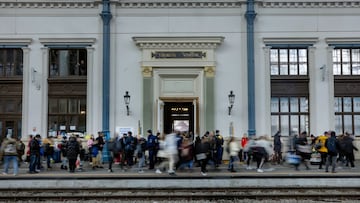When was the last time the Russian economy crashed and what were the consequences?
The country is no stranger to financial difficulties, and now must weather another as western sanctions begin to bite.


Russia is facing near unprecedented levels of economic isolation after President Vladimir Putin ordered the invasion of Ukraine in February. Led by the US, many companies such as Paypal, Shell, and McDonald's, have ceased operating in Russia, making it difficult for ordinary people to purchase things and driving the price of the Russian currency, the Rouble, to record lows. Coupled with economic sanctions, the economy is in real trouble.
Since the collapse of the Soviet Union in 1991, the Russian economy has rarely been stable. Crises hit the country in 1992 and 1998, as well as the global recession of 2008. After, there was another crisis in 2014 in reaction to the Russian occupation of the Crimea.
How bad was the 2014 economic crisis?
As Russia occupied the Crimea, and militarily supported the breakaway provinces of Donetsk and Luhansk, other nations sanctioned Russia economically, leading to many people taking their investment out of the country. The Russian stock market, RTS index, lost 30 percent of its value in just two weeks at the start of December 2014.
Other effects included Russia's foreign reserves being reduced to under $400 billion for the first time since 2009, as well as direct foreign investments falling by 92 percent by the end of 2015. The strength of the rouble halved by December 2014, a weakness that has been further exacerbated by the sanctions imposed by western governments in 2022.
What other economic crises has Russia endured?
In 1997, a financial crisis occurred in Asia. Russia was acutely affected, much like today, the economy depended on exports of raw materials such as oil, natural gas, metals, and timber . These commodities accounted for 80 percent of its exports.
This fact produced an increase in the country's debt to GDP ratio. To alleviate this situation, the Government increased the yield on the country's short-term bonds, the GKOs , in exchange for a higher debt payment by the State.
The International Monetary Fund (IMF) and the World Bank (WB) approved a first aid package to Russia for a total of $22.6 billion. However, wage arrears began and coal miners went on strike in May 1998. The government maintained its strategy of keeping the rouble to dollar exchange rate in a narrow band at the expense of even spending its foreign reserves to maintain the Russian currency.
On August 17, 1998, faced with the impossibility of paying the debt, the Government and the Central Bank of Russia announced the suspension of payments for 90 days to non-residents and cancelled operations with the GKOs that expired before December 31, 1999.
In September 1998, the exchange rate was 21 roubles to one US dollar: it had lost two-thirds of its value in just one month. The Russian economy recovered from the 'Vodka Effect', as this debt crisis was also known, thanks to the gradual rise in oil prices.
The financial situation of Russia in 2022
According to JP Morgan data collected by The Economist, the Russian economy is expected to contract by 7 percent in GDP by 2022, while Bloomberg Economics forecasts a drop of around 9 percent. For this March 5 the exchange rate is 124 roubles for each US dollar.
Biden says sanctions have, "cratered the Russian economy." pic.twitter.com/JpTDXLdGYp
— Sarah Reese Jones (@PoliticusSarah) March 8, 2022
A JPMorgan tally of damage from sanctions on Russia show the economy’s collapse may be comparable to the default of 1998. A crash in Russian GDP of 11% is “in line with the drop in the 1998 debt crisis”.
— Daniel Lacalle (@dlacalle_IA) March 4, 2022
Bloomberg pic.twitter.com/P3KMG1A1qO